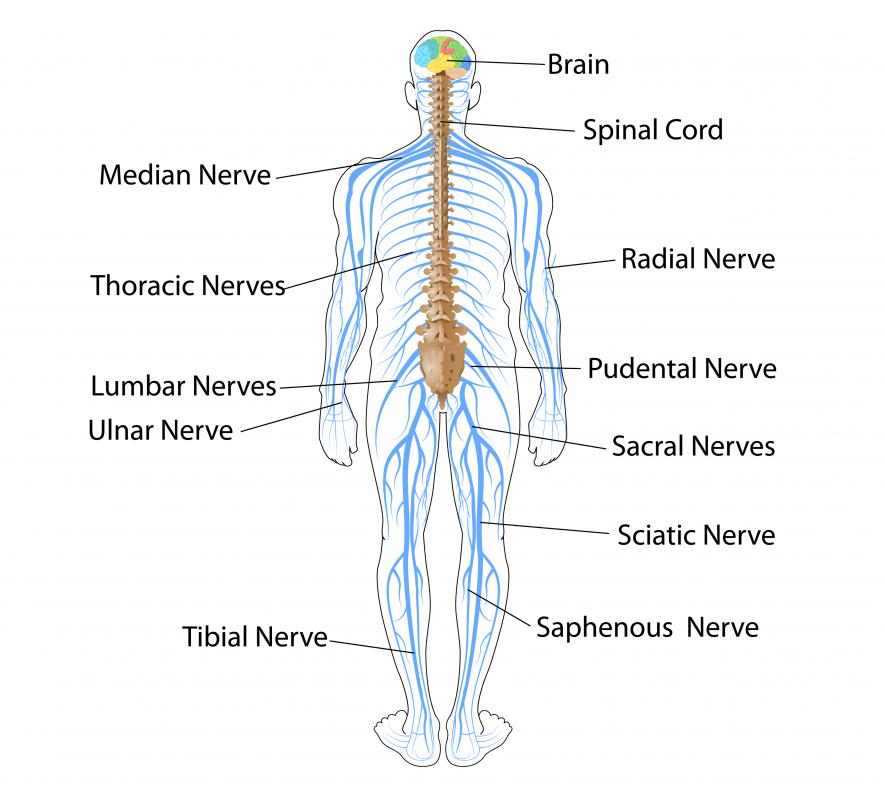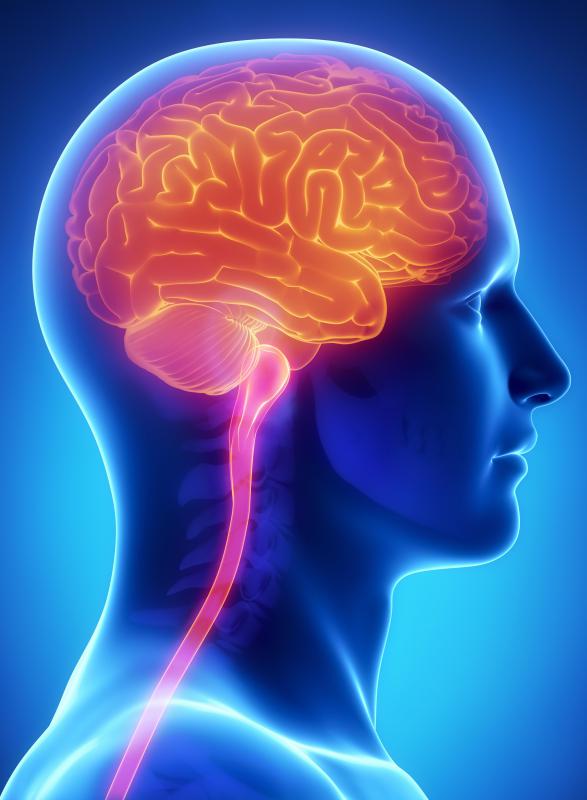At TheHealthBoard, we're committed to delivering accurate, trustworthy information. Our expert-authored content is rigorously fact-checked and sourced from credible authorities. Discover how we uphold the highest standards in providing you with reliable knowledge.
What is the Extrapyramidal System?
The extrapyramidal system is a neural network in the central nervous system that helps regulate and modulate motion. It is part of the motor system, along with the pyramidal or corticospinal tract. This network arises from regions in the human brain, such as the pons and medulla, and continues to the spinal cord. Intake of substances or medications can affect the extrapyramidal system, leading to disturbances in motion and balance.
The extrapyramidal system indirectly controls motion. It is also referred to as the indirect activation pathway of motor functions. Primarily, the extrapyramidal system is involved in maintaining equilibrium, coordination, posture, muscle tone, and reflexes. For example, when a person tries to maintain an erect posture while sitting or standing, many muscles are contracting in a coordinated manner. This coordination is under involuntary control by the extrapyramidal pathways, namely the rubrospinal tract, tectospinal tract, reticulospinal tract, and vestibulospinal tract.

Anatomically, this system is comprised of collections of neurons in the brain stem, including red nucleus, superior colliculus, reticular formation, and vestibular nuclei. Large axons from the red nucleus form the rubrospinal tract, and help control the movements of the upper limbs. The vestibular nuclei receive input from the inner ear, spinal cord, and cerebellum, and form the vestibulospinal tract for the postural adjustments of the neck, head, trunk, and limbs. In addition, the superior colliculus form the tectospinal tract, which is important in the reflex movements of the head and eyes, such as closure of the eyelids before a foreign body can reach the eye. Finally, the reticular formation forms the reticulospinal tract, which is essential in muscle control.

When there is a disease or condition affecting the extrapyramidal system, abnormalities in muscle tone, reflexes, and posture can be observed. A set of symptoms called extrapyramidal symptoms (EPS) can occur as a result from intake of drugs or substances that act on the brain and its signaling pathways. The antipsychotic drug haloperidol, which is used in the treatment of schizophrenia, can cause EPS.

Examples of EPS include akinesia, akathisia, torticollis, and dyskinesia. A person with akinesia has difficulty initiating a movement, whereas a person with akathisia is restless and unable to remain still. Torticollis causes are person to experience painful neck spasms. Dyskinesia causes uncontrollable facial ticks.
Rabbit syndrome, the fine and involuntary rhythmic movements of the mouth without tongue involvement, is a rare set of EPS due to years of treatment with antipsychotic drugs. The medications most commonly implicated in the rabbit syndrome are haloperidol, pimozide, and fluphenazine. Rabbit syndrome as also been linked to prolonged olanzapine, clozapine, and risperidone use. Unfortunately, this syndrome cannot be treated easily. When antipsychotic medications are needed, a patient may be shifted to atypical antipsychotic drugs, such as quetiapine and remoxipride, which have less probability of causing rabbit syndrome.
AS FEATURED ON:
AS FEATURED ON:















Discussion Comments
@Nefertini - I agree. A coworker of mine with a schizophrenic son could not keep him on his prescriptions because of the side effects of the drugs, yet his psych symptoms when he was not taking his meds were quite disturbing also.
Extrapyramidal side effects cause some patients to want to discontinue their medications. Since drugs for serious conditions like schizophrenia and psychosis can trigger these neurological disturbances, the patients are in the frustrating situation of needing medication to control their psych problems but suffering from EPS from the medications they take. Anyone who experiences EPS should ask their doctor about changing their medicines to try to alleviate these symptoms. That way, they're still getting meds for their psych issues but not getting ill effects from those meds.
Post your comments